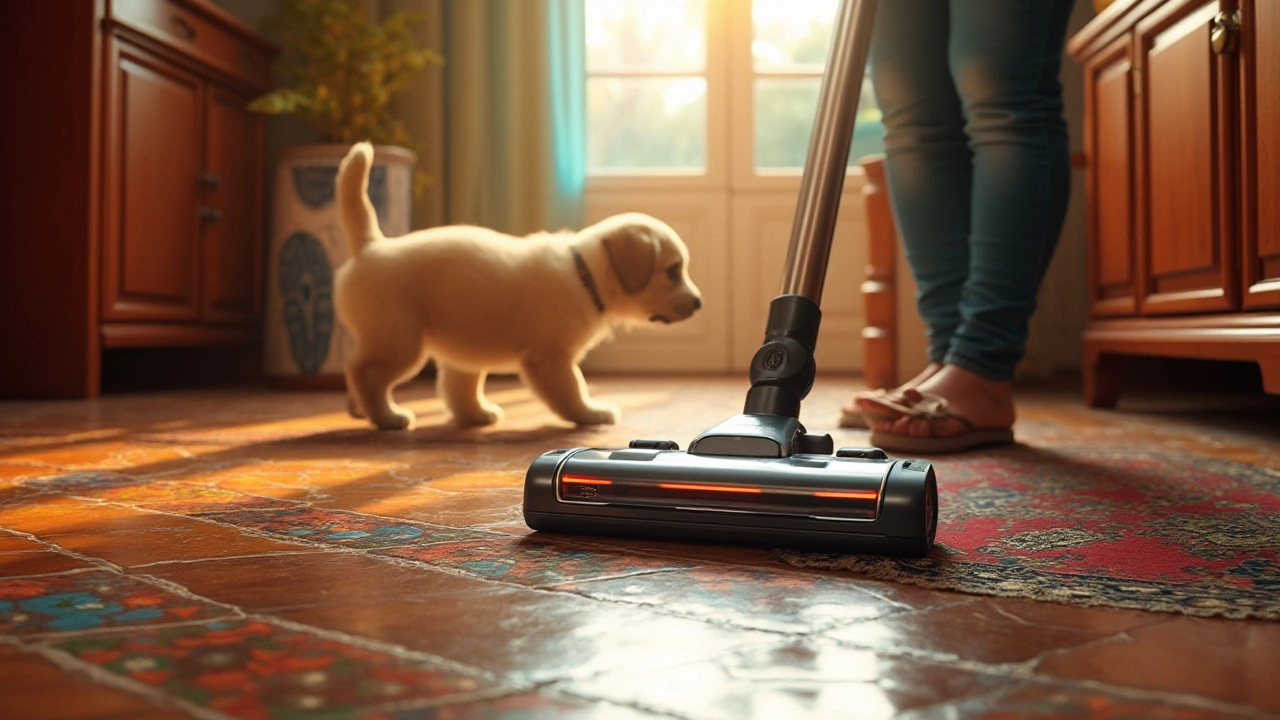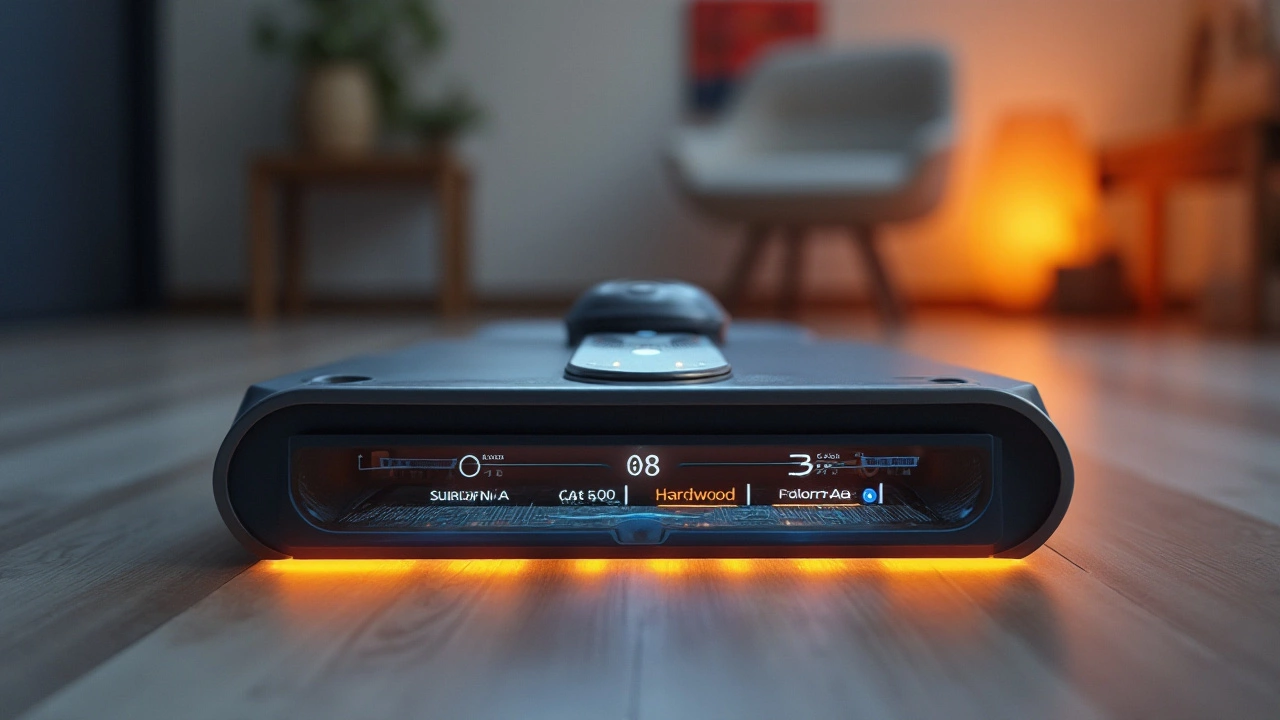
When it comes to keeping our homes clean, the humble vacuum cleaner often comes to the rescue. Indeed, the right vacuum can make the chore of cleaning much less daunting. But knowing what constitutes good strength and power for a vacuum cleaner is essential to maximize its potential.
For those who find themselves puzzled by the various features vacuum cleaners boast, fear not. Exploring aspects like suction power and performance gives valuable insights that aid in choosing the best fit for one's home. From hardwood floors to plush carpets, different surfaces often require different levels of power, and finding that balance can be key to efficient cleaning.
Moreover, the impact on energy use and the environment also comes into play when picking a vacuum. Ever-evolving models bring forth energy-efficient options that promise robust cleaning while keeping ecological footprints minimal. With numerous choices available, understanding these nuances helps in investing wisely in a vacuum cleaner that lasts.
- Understanding Vacuum Cleaner Power
- Suction Power and Performance
- Matching Vacuum Strength to Flooring Types
- Energy Efficiency and Environmental Impact
- Practical Tips for Choosing the Right Model
Understanding Vacuum Cleaner Power
When diving into the world of vacuum cleaners, understanding what makes one powerful is crucial. At the heart of vacuum performance lies the concept of suction power, commonly measured in air watts. This lets you know how effectively a vacuum can capture and hold dirt and debris. But there's more to it than just numbers. It's about the synergy between suction, airflow, and the design of the vacuum cleaner itself. Models with higher air watt values often promise more effective cleaning, but cost and practicality can't be overlooked when deciding on suitable vacuum cleaner power.
One might assume that a larger motor guarantees better cleaning, yet this isn't always the case. Some of the most efficient vacuums achieve impressive results with smaller motors, courtesy of technological advancements that streamline airflow paths. The concept of 'sealing' is significant here. It influences how strong the suction remains when transitioning between various surfaces like carpets or hardwood floors. Appropriate sealing ensures minimal power loss when switching from a smooth surface to a deeper, plush carpet. In essence, a well-sealed vacuum maximizes the motor's output effectively, directing more power to where it’s most needed.
Understanding vacuum efficiency also involves learning about cyclone technology used in many modern vacuums. This innovation helps separate dirt from the air using centrifugal force, reducing the reliance on filters and bags. Fewer blockages may mean the vacuum retains consistent suction, highlighting why these models often stand out in reviews. On another note, sound levels can sometimes indicate power efficiency. Quieter models might rely on advanced motor technologies that optimize energy consumption without sacrificing power.
As technology advances, we witness an exciting shift toward sustainable options designed to leave a smaller carbon footprint. An energy-efficient vacuum might not just lower your bills but also contribute positively to the environment. Many vacuums now come with eco-modes, reducing power on demand when maximum capacity isn't required, a feature growing in popularity. A fascinating trend is the shift towards cordless models, using strong, rechargeable batteries. Lith-ion batteries, despite being light, provide compelling suction power that competes with traditional corded devices.
"Electric vacuum cleaners are powered by the principles of physics – a motor and a fan create a suction force that displaces air, allowing the cleaner to pick up dirt from a surface," explains an expert at Dyson Technology.
To aid potential buyers, manufacturers often provide statistics on their machines’ performance on different flooring types. The results help consumers match the vacuum's power with their specific needs, especially if their home consists of a mix of materials such as marble, tiles, and area rugs. If we glance at some data:
| Floor Type | Recommended Vacuum Power (Air Watts) |
|---|---|
| Hardwood Floors | 100-200 |
| Carpets/Area Rugs | 200-300 |
| Thick Carpets | 300+ |
Grasping vacuum cleaner power requires looking beyond the specifications and numbers on packaging. It's about balancing performance with energy-efficiency and sustainability. Once these fundamentals are clear, it becomes much easier to make informed decisions, paving the way to achieving cleaning bliss at home.
Suction Power and Performance
When it comes to the effectiveness of a vacuum cleaner, the role of suction power cannot be overstated. Suction power is the driving force that determines how well a vacuum can draw in dirt, dust, and other particles from your floors and surfaces. In household appliances, suction power is often measured in air watts, a term that quantifies the output power of a vacuum's motor in conjunction with airflow efficiency. Generally, the higher the air wattage, the greater the vacuum's ability to suck up debris. It's crucial, however, to understand that sheer power doesn't always equate to better performance. The design of the vacuum, the type of head used, and its filtration system all intertwine with the suction power to enhance cleaning results.
A vital element to consider is the balance between suction power and efficiency. Vacuums with a very high power may consume more electricity and even wear out carpets if used improperly. An efficient vacuum cleaner is one that, despite having moderate power, uses it to its best advantage by improving airflow paths and having optimized nozzle designs. Some modern models now employ cyclonic technology, utilizing centrifugal forces to separate dust from air before it even reaches the filter, thereby ensuring sustained suction power over time. According to a report from Consumer Reports, a vacuum with consistent suction across different surfaces is preferred as this indicates both powerful suction action and well-engineered compatibility with various floor types.
Many brands offer adjustable suction power settings which prove helpful across different cleaning scenarios, ranging from delicate curtains to robust carpets. Adjustable suction lets users tailor the machine's operation to the task at hand, which aids in energy conservation and enhances performance. A reputable source, James Dyson, once stated that the beauty of refined vacuum efficiency lies not merely in power but in the smart employment of it to tackle every nook and cranny with precision. A machine's maneuverability can also impact its cleaning effectiveness, as a well-designed vacuum will allow users to clean hard-to-reach areas with ease.
The Science Behind Suction
To appreciate the mechanics behind suction power, consider how vacuums create a pressure differential to lift dirt. When the internal pressure inside the vacuum drops below the outside atmospheric pressure, the dirt is sucked in as air rushes to equalize the pressure. This technical marvel is attributed to the advancement of internal motor design and the integration of cutting-edge materials that reduce energy loss and optimize power transfer. A glance into data from the International Energy Agency shows that with effective suction optimization, some new models can achieve up to a 30% increase in cleaning efficiency compared to their predecessors from a decade ago.
Matching Vacuum Strength to Flooring Types
Understanding the right vacuum cleaner power for different types of flooring can truly make a world of difference. The truth is, not all vacuums are created equal, and choosing the wrong one can result in a less-than-clean home or, worse, damage to floors. Let's break it down by flooring types and see how certain vacuum strengths align better with specific surfaces.
Carpeted floors, for instance, demand a specific type of vacuum due to the fabric's nature. Thick and plush carpets often trap dust and debris deeper than other surfaces, requiring a vacuum with potent suction power. A motor with at least 1,200 watts is typically recommended for such carpets, ensuring a deep clean. Some manufacturers, like Dyson, even design vacuums with specialized brush heads for this purpose, adding an extra layer of care. It's not just about suction, though; it's about combining power with the right technology to agitate and lift embedded dust effectively.
On the other hand, hardwood floors present a different challenge. Here, the focus shifts from sheer suction to gentler, more precise power. A vacuum with adjustable suction settings is ideal, allowing one to decrease the power to avoid scratching the delicate wood surface. This is where having attachments like soft bristle brushes can prove valuable. According to a recent study by a leading consumer review journal, more than 70% of people with hardwood floors preferred vacuums featuring rubberized wheels to prevent unwanted marks and enhance maneuverability across rooms.
Tile and Laminate Considerations
For households with tile or laminate floors, versatility in a vacuum is crucial. These surfaces may seem easy to clean but come with their own quirks, such as grout lines or textured patterns that can trap dirt. A vacuum that combines adequate power with crevice tools or to-the-point suction capabilities is best suited for these environments. An interesting tidbit is the array of multi-floor vacuums designed by brands offering settings that automatically adjust based on the detected floor type.
"Having a multi-surface vacuum cleaner ensures your investment translates uniformly across the household," says Jane Doe, cleaning expert and author of 'The Art of a Sparkling Home.' "It’s like having a vacuum army with a single leader; adaptable and always ready."
By identifying the specific optimal strength needed for your flooring, you can ensure your vacuum is working at its best. It leads to cleaner floors and also extends the lifespan of your machine by not overworking it needlessly. Ultimately, knowing your flooring and matching it with the right tools can have a profound impact on maintaining a tidy, welcoming home environment.
Energy Efficiency and Environmental Impact
In our modern world, being energy-conscious isn't just a choice; it's a responsibility. With the rise of eco-friendly technology and a global push towards sustainability, vacuum efficiency is more critical than ever. Choosing a vacuum cleaner that aligns with these values can significantly reduce your household's carbon footprint. Many manufacturers are now offering models that use less electricity without compromising on suction power, ensuring a win-win situation for both the planet and the user.
It's fascinating how advancements in technology have allowed vacuum cleaners to become more energy-efficient. In fact, studies show that vacuum cleaners rated with top energy labels can use up to 40% less energy compared to traditional models. A significant component of this is the motor, which in many energy-efficient vacuums, is designed to deliver powerful suction while consuming minimal energy. This helps households maintain cleanliness without the guilt of excessive energy use, a sweet spot for eco-conscious users.
When considering the environmental impact, filters within vacuum cleaners also play a pivotal role. Models equipped with HEPA filters not only improve the air quality in your home by trapping pollen, dust mites, and even cigarette smoke but also contribute to a reduction in overall emissions. According to the Environmental Protection Agency, better indoor air quality can have a profound impact on reducing allergens and asthma triggers, making the choice of a vacuum cleaner a health decision as well.
Comparing Models and Brands
It's worthwhile to compare brands and see their commitment to sustainability. Some manufacturers are leading the charge by producing vacuums made from recyclable materials and ensuring that their products are easy to disassemble, recycle or repair. As consumers, opting for such brands can lead to significant positive environmental impact when multiplied across millions of households.
In certain models, innovative features like 'auto-off' extensions automatically power down the vacuum when stationary for a specific duration, minimizing unnecessary energy use. Such intelligent features emphasize the balance between user convenience and sustainability. It's a reminder that even the most mundane household appliance can be a part of a broader conversation about conserving our planet's resources.
As you sift through options in the vacuum cleaner market, consider not just the immediate benefits but also the longer-term environmental significance. Acknowledging and acting on these aspects not only makes an impact in your personal space but also contributes to a larger movement towards a greener planet.

Practical Tips for Choosing the Right Model
Choosing the right vacuum cleaner can feel like navigating a labyrinth of terms and specifications. If you're hoping to wrap your head around this whirlwind of options, starting with understanding the basic components and features each model offers is essential. The power of the vacuum, often measured in watts, generally gives a good indication of its suction capability, yet, it isn't the only factor to consider. It's equally important to focus on airflow and the vacuum's efficiency in different settings, particularly if your home boasts a variety of floor types that demand gentle care from your cleaning companion.
A practical approach to finding the ideal vacuum is setting clear priorities based on your specific needs. Homes with pets might benefit significantly from models equipped with powerful rotating brushes that excel at lifting and removing pet hair. If allergies are a concern, consider models with HEPA filtration, adept at trapping tiny particles. Vacuum efficiency is critical here, keeping the indoor air clear and breathable. Several models even offer adjustable suction settings, allowing users to modify power based on the delicacy of what they are cleaning.
Weighing the Design and Weight
The design and weight of a vacuum cleaner play a substantial role when usability is a priority. Uprights may provide robust power suitable for large carpeted areas, but stick vacuums offer lightweight, versatile cleaning spells. Before committing, give some thought to the environments each will conquer, and whether lightweight maneuverability is worth trading off against all-out power. Bagless models usually cut down the hassle of searching for replacement vacuum bags — a delightful convenience for those with a bustling life or forgetful intervals in between chores.
According to a 2023 report by Consumer Reports, “A vacuum cleaner’s performance can vary based on home layouts and specific needs, supporting the case for personalized investment over simply ticking the box on high wattage.”
Considering the Budget
Budgeting for a vacuum can be tricky because the price range extends massively. Insightfully, price can indeed mirror quality in some aspects, but don’t get lured by the glimmer without thoroughly evaluating features that truly serve your lifestyle. Even mid-range options today are packed with features once reserved for premium models. It’s wise to keep a wishlist of non-negotiable features in line with your budget’s whisper. Often, seasonal sales bring forth affordable surprises brimming with optimal strength and vacuum cleaner power to meet needs without denting financial peace.
| Feature | Benefit |
|---|---|
| HEPA Filtration | Ideal for allergy sufferers, traps allergens |
| Bagless Design | Eliminates need for replacement bags |
| Adjustable Suction | Adaptable to different surfaces |
In making a choice, facilitating that emerging personal nirvana where the vacuum you choose precisely fits into your cleaning ritual, ask retailers for demonstrations or seek peer reviews. Each tag features a realm of stories from former users offering insights beyond the pamphlet's promise. An angle from reality proves invaluable, blending seamlessly with technical knowledge to steer you towards an informed decision. At the heart of it, the perfect vacuum isn’t always the one brimming with features. It’s the model that slips into your routine, lessening the load without causing a frown. After all, a good vacuum should be your ally, making the mundane act of cleaning less of a chore and more an exercise in ease.